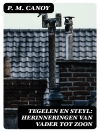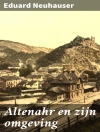In ‘The Civilisation of the Renaissance in Italy, ‘ Jacob Burckhardt presents a seminal exploration of the cultural, artistic, and intellectual revolution that marked the Italian Renaissance. Written with a distinctive narrative style that merges meticulous historical analysis with vivid, evocative prose, Burckhardt delves into the nuanced interplay between individuals and the epoch’s transformative zeitgeist. He deftly examines diverse themes such as humanism, the emergence of secularism, and the flourishing of the arts, situating Italy as a crucible of innovation and change during the 14th to 16th centuries. Jacob Burckhardt, a Swiss historian whose scholarship is steeped in the philosophy of history, was profoundly influenced by the cultural dynamics of his own era. Living in the 19th century, Burckhardt sought to understand how the Renaissance laid the foundation for modernity, reflecting on how individual expression and civic engagement shaped society. His background in classical studies and art history provided him with a unique lens through which to scrutinize the profound intellectual departures of the Renaissance period. This text is indispensable for readers interested in art history, cultural studies, and the evolution of Western thought. Burckhardt’s insights remain relevant, as they invite contemporary audiences to reflect on the complexities and legacies of Renaissance civilization. Engaging and illuminating, Burckhardt’s work is a timeless guide that bridges past and present.
Over de auteur
Jacob Burckhardt (1818-1897) was a Swiss historian and art critic whose work profoundly influenced the understanding of history and culture. Born in Basel, he was immersed in the scholarly tradition from a young age. Burckhardt’s seminal work, ‘The Civilisation of the Renaissance in Italy’, first published in 1860, is often cited as a classic in cultural history and historiography. In this book, Burckhardt delineated the Renaissance as the period where the concept of the individual emerged, setting a benchmark for European culture and influencing a move away from the medieval collective consciousness. His analysis of the period’s art, politics, and social structures forever shifted the course of Renaissance studies. Burckhardt’s literary style is marked by a deep erudition and the ability to draw connections between various aspects of human activity, a reflection of his broad learning and deep thinking. Even though some of his hypotheses have been subject to debate, Burckhardt’s impact on the humanities cannot be overstated. He brought a new depth to the understanding of the epochs by interpreting art, architecture, and political history not only as isolated phenomena but also as interwoven strands of human development. His works continue to serve as essential readings for students of history, art history, and cultural studies.












